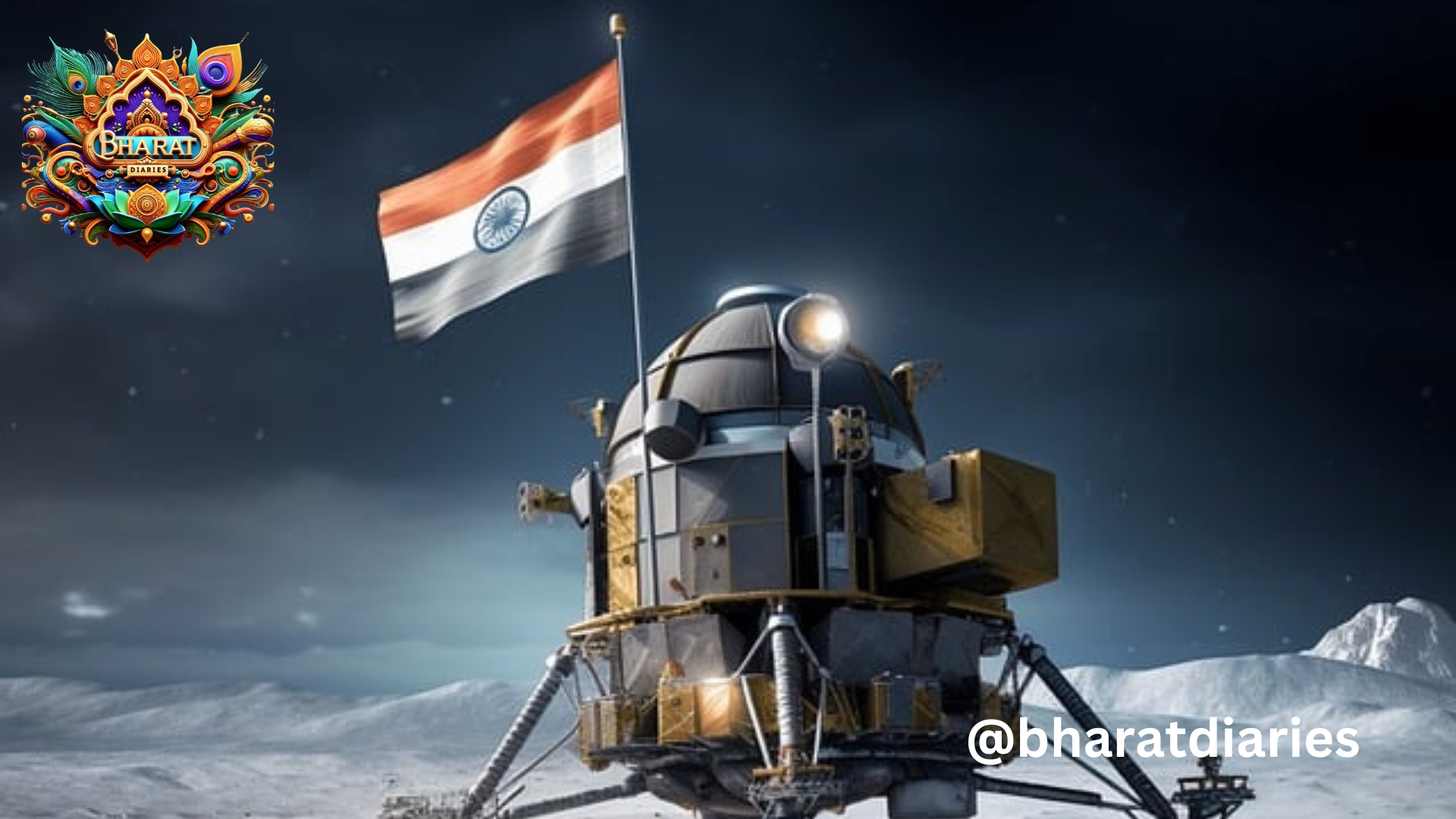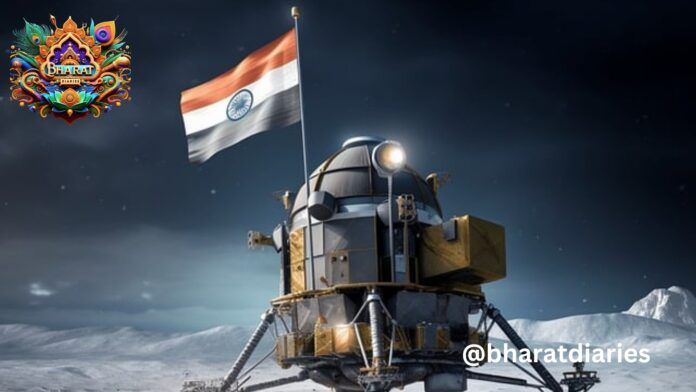
Discover ISRO’s inspiring evolution from a small space agency to a global leader in space missions. Uncover ISRO achievements, challenges, and contributions.
Table of Contents
Introduction
The Indian Space Research Organisation has won the admiration of millions of people around the world with very first unique and cost-effective space missions. It defied expectations and encounters to find its place among the top space agencies coming from modest origins. That journey stands as a testament to Indian ingenuity, resilience, and drive. This blog begins with ISRO’s history, stunning achievements, problems, and contributions, thus depicting how it emerged as a small initiative and eventually grew into one of the globe’s most advanced space organizations.
The Birth of ISRO: A Visionary Beginnings
Thus was born ISRO under the vision of Dr. Vikram Sarabhai, dubbed the “father of the Indian space program.” Sarabhai’s objective was to harness space technology for the development of India’s citizens and improving their livelihoods. In the early 1960s, India was an agrarian economy with plenty of socio-economic challenges to be solved. Sarabhai envisioned that space technology could be exploited for improvements in communication, weather forecasting, and resource mapping.
The government formed INCOSPAR, Indian National Committee for Space Research, in 1962, under the able leadership of Dr. Sarabhai. In 1969, INCOSPAR became ISRO, India’s formal step into space research and exploration.
Indian Cricket: From Humble Beginnings to Cricket Powerhouse https://bharatdiaries.com/indian-cricket-from-humble-beginnings-to-cricket-powerhouse/
The Initial Years: Building Blocks (1970s)
Aryabhata: India’s First Satellite (1975)
One of the significant achievements of ISRO included launching India’s first satellite, Aryabhata in 1975 with the first launch. Based on an ancient Indian mathematician and astronomer, it marked the entry of India into the international community of space through a Soviet rocket. Due to the technical failures that had happened during the mission, it paved the way to further milestones and raised ISRO’s confidence level.
The Major Challenges Experienced in the Early Years
ISRO’s early years were rather limited in terms of resources and technologies. The team had to improvise and learn new techniques since it was the team with the least available funds. The subsequent launch of many of the early launches depended on collaboration with other countries due to a lack of indigenous launch capabilities. In doing this, ISRO only strengthened its resolve to produce indigenous technologies, something they would realize later as a necessary step.
Building Indigenous Capabilities: The PSLV Era (1980s–1990s)
SLV: India’s First Indigenous Launch Vehicle (1980)
ISRO, with the SLV, a four-stage rocket fully designed and built in India, almost appeared to take the impetus towards self-reliance to great heights. SLV marked success in 1980 when it successfully launched the Rohini Satellite, thus making India the sixth country to attain the capability to launch satellites independently.
PSLV: The workhorse of ISRO, 1994
With PSLV, ISRO’s fortunes suddenly changed. A perfect launch in 1994 was a harbinger of good times for ISRO, as it started launching its satellites into polar orbits in multiple launches with a very high accuracy. Its long-term reliability catapulted the vehicle to the stature of “ISRO’s workhorse” since it was quite significant in the transformation of ISRO from a regional player to an international competitor in the market for launching satellites.
Overcoming Obstacles and Launching Excellent Missions (2000–2010)
Chandrayaan-1: India’s First Moon Expedition (2008)
Chandrayaan-1 was the first space mission from ISRO into deep space. Launched in 2008, it was expected to explore the surface and composition of the moon. Chandrayaan-1 was successful in detecting the presence of water molecules on the moon’s surface and had captured the imagination of the international community. In doing all this, Chandrayaan-1 proved that India could carry out complex, extended-duration missions beyond Earth orbit.
Financial and Technological Challenges
Even though the Chandrayaan-1 was declared a great success, ISRO had to face a severe budgetary crunch and was strictly denied access to many of the critical technologies at the international level. It, however made these limitations constraints for innovation. The organization transformed its focus to develop in house technologies with fewer dependences on external resources and very closely related propulsion, satellite design, and mission control.
Mars Mission: Mangalyaan – A Historic Achievement (2013)
The year 2013 marked another milestone in the annals of ISRO when it executed the Mars Orbiter Mission, or Mangalyaan, making it the first successful mission by any space agency to Mars on its maiden attempt. This fact alone made this achievement all the more remarkable, since the low budget allocated to the project was actually one of the lowest for any Mars mission. True success for Mangalyaan brought India into the elite group of space-faring nations with capabilities to explore Mars and highlighted the prowess of ISRO in providing cost-effective space technology.
Importance of Mangalyaan for ISRO
Mangalyaan not only enhanced the reputation of ISRO on international levels but also instilled great pride and enthusiasm in Indians. Mangalyaan proved the capability of ISRO in interplanetary navigation, mission planning, as well as spacecraft autonomy that helped to elevate the stature of India in global space explorations.
Upgrading Strength of Satellites and Infrastructure (2014–2020)
Satellite Navigations: IRNSS and GAGAN
ISRO did not just research but also implemented practical applications to serve the country’s defense and infrastructure requirements. IRNSS, now renamed NavIC, provided regional navigation for both civilian and military users. The Indian space agency and its government then partnered on GAGAN, or GPS-Aided GEO-Augmented Navigation, an Indian geo-augmented navigation aid created to provide increased accuracy in navigation for air traffic control purposes.
GSAT Series and Enhancing Communications
The GSAT series of communication satellites has ushered in a change in telecommunication, broadcasting, and broadband services throughout the Indian country. Together with its all-important services to remote and underserved regions, India boasts unprecedented digital and economic boom. ISRO is now an invaluable partner to the global space industry due to greater capacity to launch and manage satellite constellations.
Lunar Ambitions: Chandrayaan-2 and the Road to Chandrayaan-3
Chandrayaan-2 (2019)
Building from the success of Chandrayaan-1, ISRO sent Chandrayaan-2 in 2019. The mission to the Moon was India’s most ambitious so far-a combination of orbiter, lander (Vikram), and rover (Pragyan). Vikram lost contact while descending to the Moon’s surface; however, the orbiter is still collecting valuable data about the lunar surface and environment.
Chandrayaan-3 and Perseverance
Learned from the misadventures of Chandrayaan-2, ISRO announced its mission plans for Chandrayaan-3, with an emphasis on landing on the lunar surface successfully. This showcases resilience by the organization and commitment toward lunar exploration while being willing to learn from setbacks and continue advancing.
Recent Developments and the Future: Gaganyaan and Beyond
Gaganyaan: India’s Human Spaceflight Program
Gaganyaan ISRO mission will launch Indian astronauts to low Earth orbit. It is the technological leap towards the human exploration space as far as India is concerned. This mission brought India to collaborate with international partners that include the former Soviet Union and France in advancing the technology in the field of spaceflight where a human is concerned. This will highlight the maturity of India’s technology and provide a platform for many more space ventures in the future.
Aditya-L1: India’s Solar Mission
Aditya-L1 will prepare ISRO to study the Sun and its outermost layer, the corona. The mission will gather critical data through which scientists can have a more profound understanding of the solar activities and how they have an impact on space weather, ever so important, as the world is increasingly dependent on technology in space.
ISRO has established itself as a major player in the world space economy. It launches satellites of other countries on a regular basis at market-oriented prices. NewSpace India Limited (NSIL) created an interface for ISRO commercial ventures, so it could enter into the satellite launch and manufacturing satellite business with overseas commercial clients.
Conclusion
The ISRO’s journey from a small, resource-constrained organization to a globally recognized power in space is one of the most inspiring stories of modern science. These have been overcome through a ride of numerous technological limitations, budgetary constraints, and international sanctions for achieving extraordinary space-exploration milestones. The success of PSLV launches and Mangalyaan and Chandrayaan missions has catapulted India to a premier position in the global space arena. These, and many more ambitious missions such as Gaganyaan and Aditya-L1, are in the horizon.
The ISRO’s successes have not only been about technology but symbolized resilience, innovative, and ambitious Indian spirits. They proved to the world that being a poor country should not define or characterize how dependent one is or can be in space exploration.
FAQs
1. What was ISRO’s first satellite?
India’s first satellite was Aryabhatta, placed in orbit in 1975. With Aryabhatta, India entered the age of space and established itself for further space explorations in the future.
2. What is Mangalyaan, and why is it important?
Mangalyaan, or the Mars Orbiter Mission, was India’s first spacecraft to go to Mars, launched in 2013. While doing so, India made history by becoming the first country to be successful in its maiden attempt to Mars and the fourth space agency globally to reach Mars.
3. What is Gaganyaan?
Gaganyaan is India’s first human space flight mission by ISRO, whose target is to send Indian astronauts into space in low Earth orbit. It was ISRO entering into human space exploration and marked the pinnacles of Indian Space Technology.
4. How does ISRO help in the Indian economy?
The ISRO helps in the Indian economy as it provides satellite services for Telcom, weather forecasting, navigation, to name a few. The commercial arm of NSIL generates revenue by launching satellites to global clients.
5. What is Chandrayaan-3?
Chandrayaan-3 is ISRO’s planned follow-up mission for Chandrayaan-2, which is aimed at a soft landing on the lunar surface, further building India’s lunar exploration capabilities.
ISRO is, in every respect, a story of dedication to the cause of science, innovation, and national pride. Its glory will remain an inspiration for generations to come, and it will inspire a country reaching for more from it in the true sense of the word. It will tell them that even the sky does not become a limit for one who sets his mind on something and is not willing to let it go easily.
